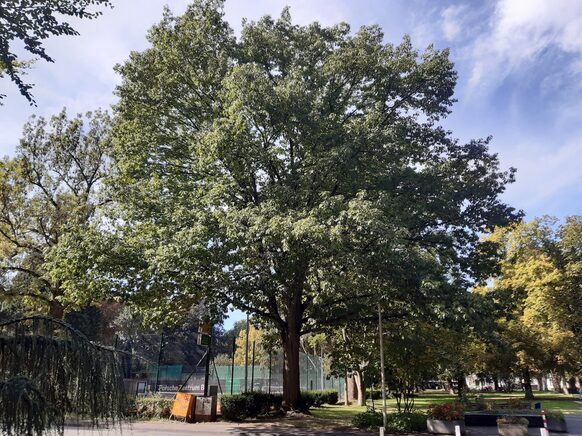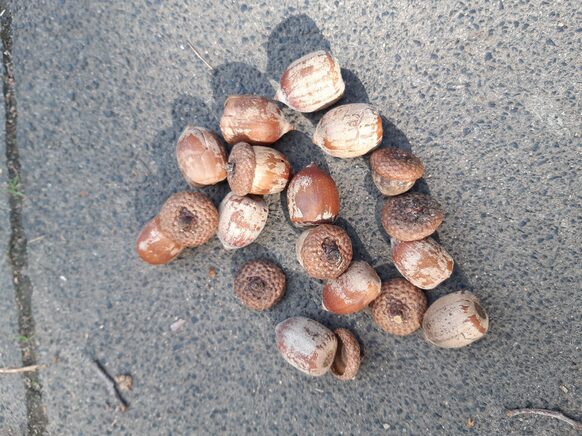
- Quercus rubra
- Eastern North America
Genus
Quercus is the old Roman name for oak.
A deciduous (but there are also evergreen species), large, mighty, long-lived street, garden, park and forest tree with a strong landscape-shaping effect and overall ecological significance.
Oaks can live to be 1,000 years old; in Germany there are several specimens that are several hundred years old. It is an extensive genus with around 600 species, distributed in Europe, North Africa, Asia, North and South America.
In history and literature, the oak is firmly anchored as an oak of judgment and song; Celts, Goths, Germanic tribes and Romans worshipped it as a tree dedicated to the gods. Germanic tribes dedicated it to the thunder god Donar. The oak was regarded as a symbol of power and strength, the tree of man.
The oak leaf wreath was a symbol of power and strength, a sign of victory.
The oak was and is valued as a medicinal plant with tannins and bitter substances. It is said to have anti-inflammatory, hemostatic and germicidal properties.
Information on the species

Quercus rubra (American red oak)
The species name rubra means red.
The American red oak (Quercus rubra) is one of three species introduced to Europe, such as the swamp oak (Quercus palustris) and the scarlet oak (Quercus coccinea). All three make great design elements in our parks, streets and gardens.
Deciduous, fast-growing large tree with a rounded crown up to 40 meters high and 25 meters wide, spreading and with a strong crown framework.
Bark: smooth reddish, olive-brown, glossy
Leaves: obovate up to 25 cm long and 15 cm wide, sharp-toothed lobes, shiny dark green, splendid orange to scarlet red in autumn, overwintering on the tree.
Fruits: acorns up to 2.5 cm long in short-stalked cups
Characteristics: industrially hardy, resistant to urban climates, frost-hardy, pest-resistant, particularly drought-tolerant
Together with the robinia, the panicle bladder tree or the flowering ash and the American oak, which have currently proven to be drought-resistant, these are trees of the future in our region.